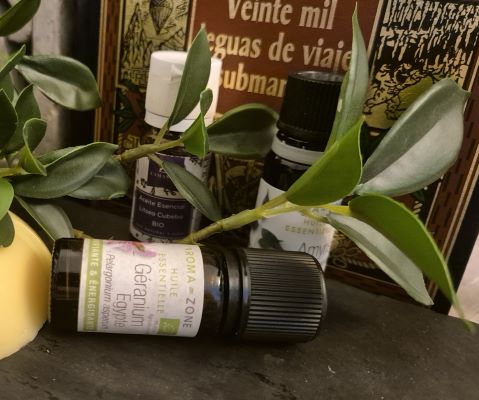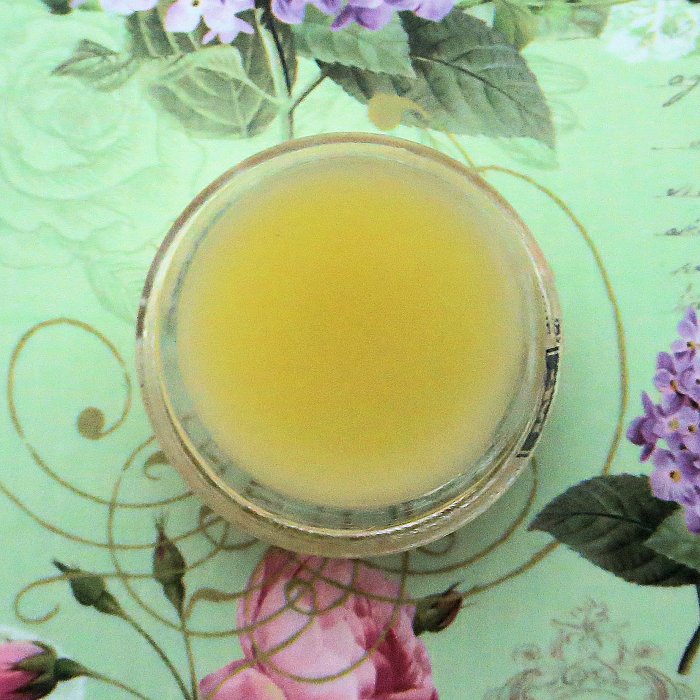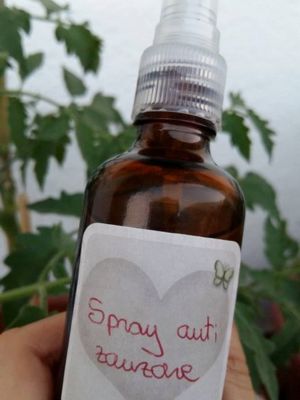Summertime can be challenging if you live in or are spending your holidays in an area with mosquitoes. Luckily, nature can help us with its precious essential oils.
In this blog post and the related video, I’ll show you how you can make different bases of liquid and solid DIY mosquito repellents (oil-based, water-based, and alcohol-based) and provide a list of mosquito-repellent essential oils and blends, along with some extra tips that could be very useful when you formulate such a product.
Mosquito Repellent Essential Oils
Lemon Eucalyptus (Eucalyptus citriodora)
- Benefits: One of the most effective essential oil for repelling mosquitoes. It’s used to make Citriodiol, a very efficacious repellent used in many commercial products.
- Usage Limit: Do not exceed 0.4% (check product sheet for variations). Buy it here.
Eucalyptus globulus
- Benefits: Offers a fresh scent and harmonizes well with other essential oils in blends. Buy it here.
Geranium
- Benefits: Provides a very nice floral scent and is effective in repelling mosquitoes. Buy it here.
Blue Tansy Oil
- Benefits: has a distinctive smell that may not be for everyone.
- Usage Limit: Do not exceed 1% (check product sheet for variations). Buy it here.
Litsea Cubeba
- Benefits: Has an uplifting, pleasant, and vibrant scent.
- Usage Limit: Do not exceed 0.3% (check product sheet for variations). Buy it here.

Repellent essential Oils with Caution for Sun Exposure
Other essential oils that keep mosquitoes away can be photosensitizing or phototoxic, so they should not be used if you expose your skin to the sun. They are best used more than 12 hours before any sun exposure and it’s recommended to shower before sun exposure to be safe. However, you might consider using these oils in candles or diffusers at night, or if you live in the city and do not plan to spend time outdoors during the day.
Citronella (Cymbopogon nardus)
- Benefits: Very effective mosquito repellent. There is conflicting information about its phototoxicity/photosensitizing, so it’s best to use it cautiously. Buy it here.
Lemongrass
- Benefits: Very effective and with a fresh aroma.
- Usage Limit: Do not exceed 0.3% (check product sheet for variations). Similar to citronella, its phototoxicity/photosensitizing is unclear.
Lavender
- Benefits: Very pleasant smell.
- Usage Limit: Avoid sun exposure. Buy it here.
Peppermint
- Benefits: Adds a vibrant fresh note.
- Usage Limit: Avoid sun exposure. Buy it here.
Citrus Oils (General)
- Benefits: Very pleasant citrus smell. Include lemon, lime, bergamot, orange...
- Usage limit: phototoxic/photosensitizing. However, some citrus oils are safe if used within specific dosages or if they are particular types, such as bergamot without furocoumarins. The safety of essential oils can also depend on the extraction method used. Always check the product sheet and conduct thorough research to ensure safe usage.
Warnings
- Essential oils can be irritating, always do a patch test before using them for the first time and double check the recommended dosages on the product sheet (it may vary depending on the brand).
- Kids and pregnant women should not use essential oils.
- Essential oils are effective but their effect does not last very long. For high mosquito areas or where mosquitoes may transmit severe illnesses, stronger and certified repellents are recommended. Natural versions containing Citriodiol, approved by COSMOS and ECOCERT, are available as well.

14 Essential Oil Blends for Mosquito Repellents
Creating essential oil blends that are both effective and pleasant can elevate your DIY mosquito repellents, ensuring they not only keep insects away but also smell delightful.
Each blend below yields 2 grams of essential oils, which should be diluted in one of the oil, water, or alcohol bases provided later in this guide. The final product will consist of 2% essential oil blend and 98% carrier base.
Blend 1: Lemon Eucalyptus: 0.4g, Litsea Cubeba: 0.3g, Eucalyptus globulus: 1.3g
Blend 2: Lemon Eucalyptus: 0.4g, Eucalyptus globulus: 1.6g
Blend 3: Geranium: 1.2g, Litsea Cubeba: 0.3g, Eucalyptus globulus: 0.5g
Blend 4: Geranium: 0.7g, Litsea Cubeba: 0.3g, Eucalyptus globulus: 1g
Blend 5: Geranium: 1.6g, Lemon Eucalyptus: 0.4g
Blend 6: Geranium: 1g, Eucalyptus globulus: 1g
Blend 7: Geranium: 1.1g, Blue Tansy: 0.2g, Lemon Eucalyptus: 0.4g, Litsea Cubeba: 0.3g
Repellent essential oil blends that should not used if you expose your skin to the sun:
Blend 8: Lemon Eucalyptus: 0.4g, Peppermint: 0.6g, Lavender: 1g
Blend 9: Peppermint: 0.5g, Lavender: 0.5g, Geranium: 0.5g, Blue Tansy: 0.5g
Blend 10: Lemongrass: 0.3g, Lemon Eucalyptus: 0.4g, Citronella: 1.3g
Blend 11: Bergamot (furocoumarin-free): 1g, Geranium: 0.4g, Lemon Eucalyptus: 0.4g, Litsea Cubeba: 0.2g
Blend 12: Citronella: 1g, Geranium: 0.6g, Lemon Eucalyptus: 0.4g
Blend 13: Lemongrass: 0.3g, Citronella: 1.2g, Blue Tansy: 0.5g
Blend 14: Bergamot (furocoumarin-free): 0.8g, Citronella: 1.2g
Instructions for Using Essential Oil Blends
- Measure Essential Oils:
- Use a precision scale to accurately measure each essential oil according to the blends provided.
- Use a precision scale to accurately measure each essential oil according to the blends provided.
- Combine Essential Oils:
- Add the measured essential oils to a container.
- Stir thoroughly to ensure all oils are evenly mixed.
- Select a Base:
- Choose a 100 g base for your mosquito repellent. Options include:
- Oil-Based: a carrier oils like jojoba.
- Alcohol-Based: Ethanol.
- Water-Based: Water with a dispersant and preservative.
- Detailed recipes for each base can be found below.
- Choose a 100 g base for your mosquito repellent. Options include:
- Mix with Base:
- Add the 2g essential oil blend to the 98g base (the total will be 100 g). Refer to the base recipes provided below for detailed instructions on preparing the different bases. Mix thoroughly to ensure the essential oils are well-dispersed.
- Transfer and Store:
- Transfer the finished product to a container.
- Store the container in a cool, dark place to maintain the efficacy of the essential oils..
How to make Mosquito Repellent Bases - the recipes
Oil-Based Mosquito Repellents
Oil-based repellents are milder on the skin. You only need a carrier oil and mosquito-repellent essential oils.
However, they can feel greasy and stain clothes and should not be used on fabric or to spray in the air. To mitigate greasiness, mix light-feeling oils like jojoba, fractionated coconut oil or sunflower oil. For a drier effect, use esters like Dicaprylyl Ether, Coco-Caprylate, and Dicaprylyl Carbonate. However, keep in mind that oils that are more greasy use to last a bit more. For a more delicate version, opt for oils that are soothing and suitable for sensitive skin, like raspberry or oat oil. Best to put these in a roll-on container for easy application.
Liquid Oil-Based Recipe:
- Oil: 98%
- Essential Oils blend: 2%
Instructions:
- Mix the ingredients and put in a roll-on container.
Enhancements: Add skin-loving ingredients like soothing bisabolol. Squalane makes the fragrance last longer, repairs the skin barrier and provides a light feeling.
Solid Oil-Based Mosquito Repellent Recipe:
- Beeswax: 10g
- Oil: 88g
- Essential Oils blend: 2g
Instructions:
- Melt the beeswax in a double boiler.
- Add the oil (use a heat-resistant oil like jojoba or coco-caprylate).
- Let it cool slightly and add the essential oils when it starts to thicken but is still liquid.
- Pour into a jar and let it solidify (refrigerate for 2 hours if needed).
Adding repellent essential oils to solid lotions and salves
A smart, space-saving and travel friendly idea is to add your mosquito repellent essential oil blend to balms and all-over solid lotions. This way, you have one product that hydrates, soothes sunburns and repels mosquitoes. I have 2 formulas that you might find interesting:
Alcohol-Based Mosquito Repellents
Not everyone likes using alcohol and it is not recommended for dry and sensitive skin. On the practical side, alcohol-based repellents can be sprayed on the body, ambiance and textiles (test on a hidden part of the fabric first), so they are quite versatile.
Simple Alcohol Recipe:
- Alcohol/Ethanol: 98g
- Essential Oils blend: 2g
Alcohol and Water-Based Mosquito Repellent:
- Alcohol and Water Mix Recipe:
- Alcohol/Ethanol: 60g
- Water: 38g
- Essential Oils blend: 2g
- Instructions:
- Mix the ingredients and transfer in a spray container.
Note: Combining alcohol with water reduces the alcohol concentration while retaining the benefits of a sprayable product. This also eliminates the need for a preservative. However, essential oils can degrade more quickly in water, so it's best to use the mixture within a month.

Water-Based Mosquito Repellent
If you prefer a milder version, use water as a base. You’ll need an essential oil dispersant and a preservative.
Basic Recipe:
- Water: 89.4g
- Solubol: 8g
- Essential Oils: 2g
- Benzyl Alcohol, Dehydroacetic Acid preservative: 0.6 g
Enhanced Recipe with glicerine:
- Water: 85g
- Glycerin: 5g
- Solubol: 8g
- Essential Oils: 2g
- Benzyl Alcohol, Dehydroacetic Acid preservative: 0.6 g
Glycerin is hydrating and is a perfume fixative.
- Instructions:
- Mix the ingredients and transfer in a spray container.
Additional Enhancements for your water based mosquito repellent formulas:
- Add hydrating actives like hyaluronic acid or fucocert.
- Replace water with aloe vera gel or add 0.3% dried aloe vera powder for its calming effects.
- To make a gel, add 0.5% xanthan gum.
Note: Use water-based repellents within a month due to faster deterioration of essential oils.
After mosquito bite formulas
What should you do if you've already been bitten by a mosquito? Try using soothing, homemade remedies such as aloe vera gel or a super-soothing summer salve!
Follow me on Instagram and YouTube for more DIY cosmetics tips and guides!

